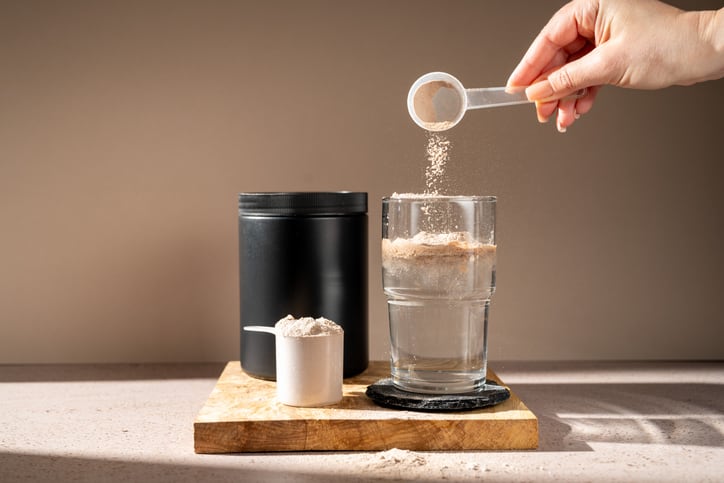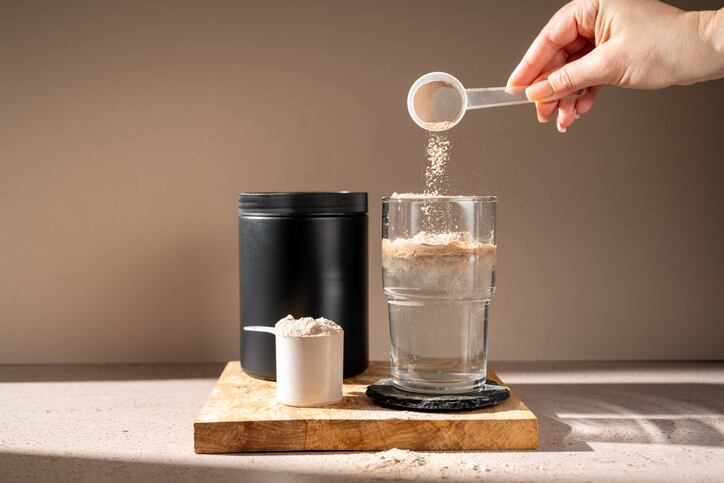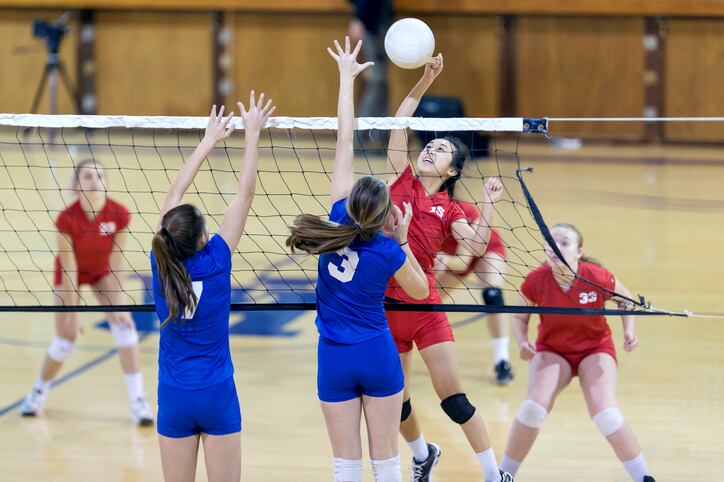Neither collagen hydrolysate nor dairy protein improved exercise-induced muscle damage better than the placebo, according to researchers from Massey University, New Zealand.
“Our findings suggest that, when consumed for three days after damaging exercise, collagen hydrolysate or dairy protein does not expedite the rate of recovery any better than an isoenergetic placebo.
“Our findings add to the growing evidence that suggests that dairy protein has little benefit for recovery from exercise-induced muscle damage,” wrote researchers in Nutrients.
Additionally, they added that for collagen hydrolysate to improve recovery, supplementation for extended periods of time may be necessary: “For collagen hydrolysate to have a beneficial effect on how muscle responds to eccentric exercise, consuming collagen hydrolysate for a prolonged period, of at least nine days, prior to exercise may be necessary.”
Managing exercise-induced damage
Exercise-induced muscle damage is caused by exercise that is strenuous, repetitive, novel, and/or involves eccentric muscle contractions, such as downhill running.
Whilst this is temporary, and may be beneficial for future muscle adaptation, it can create problems for regular exercisers by impairing performance during subsequent bouts of exercise or by causing a disruption to normal daily activities that are not otherwise an issue.
Dairy protein supplementation, which includes whey, casein, and whole milk, was regarded as the most prescribed solution for this issue, among other interventions that included omega-3 fatty acids, various amino acids, polyphenols, and herbal extracts.
Despite mixed evidence for its effects on exercise-induced muscle damage, and a significant environmental footprint, dairy protein’s convenience and effects on muscle protein synthesis make it the major contributor to a protein supplement industry that is expected to be worth over USD 10 billion by 2030 in the US alone, according to researchers.
Researchers and the supplement industry are therefore exploring new protein sources like bovine collagen, a by-product of the meat industry rich in amino acids that support collagen synthesis and tissue repair. Collagen hydrolysates break down into amino acids and peptides, such as hydroxyprolylglycine (Hyp-Gly) and prolylhydroxyproline (Pro-Hyp), which are absorbed into the bloodstream and aid in muscle recovery.
In this study, researchers aimed to comparing the effects of collagen hydrolysate and dairy protein on recovery from eccentric exercise.
A double-blind, placebo-controlled study
Thirty-three active, healthy males aged between 18 and 40 years participated in this study. All participants performed aerobic and resistance exercise at least twice per week in the six months prior to this study and had fair to good aerobic fitness.
The study used a double-blind, placebo-controlled design to compare the effects of collagen hydrolysate, dairy protein, and a placebo on recovery from 30 minutes of downhill running.
Participants were grouped based on their VO2max, a measure of the maximum amount of oxygen the body can use during intense exercise, which reflects fitness levels.
They were then randomly assigned to one of the three groups – collagen hydrolysate (CH), dairy protein (DP), and placebo (PLA). No differences in mean age, height, body mass, aerobic fitness (VO2max), downhill running speed, and energy and protein intake between treatment groups were found.
To standardise energy intake, participants were given a drink containing maltodextrin – providing 1000 kJ of energy – two hours before their trial to match the energy content of the supplements used later.
After at least one week, participants returned for the main trial. Baseline measures of exercise-induced muscle damage – including blood sampling, muscle soreness, muscle function, and running efficiency – were taken.
They then completed 30 minutes of downhill running at 80% of their VO2max speed. After a 30-minute rest, the same measures were repeated, and participants consumed their first supplement (collagen hydrolysate, dairy protein, or placebo).
For the next three follow-up sessions – 24, 48, and 72 hours after the run – participants consumed their assigned supplement two hours before returning to the lab for assessments.
The supplement powders – collagen hydrolysate, dairy protein, and placebo – were sealed in foil packaging and labelled A, B, or C by staff uninvolved in the study.
The collagen hydrolysate supplement was a spray-dried prototype made from dehaired cowhide sourced and processed within New Zealand. The dairy protein supplement incorporated milk protein concentrate 470 from Fonterra Cooperative Group Ltd, combining whey and casein for their immediate and sustained protein release effects. The placebo contained maltodextrin provided by Archer Daniels Midland Company.
To ensure consistency, all supplements were designed to have the same energy content, with the collagen and dairy protein powders each providing 25 g of protein. They were all flavoured with natural and artificial vanilla to ensure consistency. Each dose was mixed with 250 mL of water in a shaker before consumption.
The results
The downhill running caused significant exercise-induced muscle damage, evident from increases in muscle soreness, declines in jump height, strength, and running efficiency, and elevated biomarkers of muscle damage (creatine kinase) and inflammation (interleukin-6 and C-reactive protein).
However, no significant differences were observed between the collagen, dairy protein, or placebo groups for any of these measures.
For example, countermovement jump height decreased significantly, with a reduction from ~38 cm pre-exercise to ~35 cm at 30 minutes, persisting below baseline for up to 72 hours.
Running efficiency, as measured by VO2, worsened substantially, increasing from ~42 mL/kg/min pre-exercise to ~45 mL/kg/min immediately post-run and remaining elevated for 48 hours.
Collagen hydrolysate was not equal, nor more beneficial than dairy protein, and neither protein source was better than the placebo, observed researchers.
“These findings suggest that the post-exercise consumption of CH or DP does not improve indices of exercise-induced muscle damage during the acute recovery period in recreationally active males,” said researchers.
Contrary to expectations, neither collagen hydrolysate nor dairy protein outperformed PLA in improving muscle function, soreness, or inflammatory markers. Although collagen hydrolysate has shown benefits in some studies, particularly for countermovement jump performance, findings remain inconsistent due to varying methodologies, supplementation timing, and participant factors. The lack of a clear benefit in this study suggests that collagen hydrolysate or dairy protein supplementation post-exercise may be insufficient for recovery, and long-term or pre-exercise supplementation might be necessary for protective effects. Further research is needed to clarify their roles in mitigating exercise-induced muscle damage.
“We propose that individuals specifically wanting to speed up recovery after strenuous, damaging exercise should no longer consider acute, post-exercise protein supplementation as a reliable and valuable strategy,” concluded researchers.
Source: Nutrients
DOI: https://doi.org/10.3390/nu16244389
“Comparing the Effects of Collagen Hydrolysate and Dairy Protein on Recovery from Eccentric Exercise: A Double Blind, Placebo-Controlled Study”
Authors: Rachel Barclay, Jane Coad et al.





